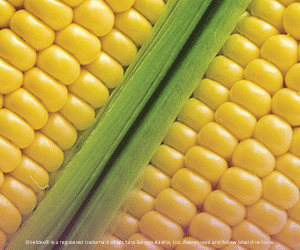Impact assessment
FROM THE CEO'S DESK

SAYING IT’S BEEN a challenging planting season for grain farmers across the province would be an understatement.
I can’t count how many stories we’ve heard across the countryside of farmers struggling with issues with the new seed treatment regulation as they prepared for the planting season. From the hours upon hours spent filling out the hundreds of pages of paperwork, or the hundreds of holes dug in fields and worms hand-counted — farmers were frustrated. Worse though, are the stories of farmers who recognized that their specific field would not be viable without neonics and simply gave up on corn and soybeans all together.
We are all aware of how situations arise from time to time when a neighbour comes over with the offer to rent you a parcel of land and what should be an opportune situation turns into a nightmare. This year, we’ve heard a lot of these nightmares, as well as fear, because of the uncertainties of market distortion under the new regime. In many cases, smaller farmers are struggling to manage the requirements and paperwork and have decided it’s not worth the effort or the investment to increase their farming operations, which is a truly sad reality. And let’s all remember, this is only “year one” — the year of “transition” — as these regulations come into full force in 2017.
It’s critical that our provincial government, and our federal government, understand the hardships the seed treatment regulation has made, and continues to make, on grain farming in Ontario. To ensure the impact is captured and documented, we are working with BDO Canada. And, we are asking our farmer-members to help with this undertaking as well.
If you haven’t already, document the new work that you have completed in order to comply with the seed treatment regulation. Reflect back on training, soil assessments, neonic declarations, agronomist consultations, and seed treatment ordering challenges. Record this, and any ongoing new work, and share it with Grain Farmers of Ontario by emailing mmackimmie@gfo.ca.
Beyond farmers, we are also asking our industry friends to do the same. Share your business challenges, additional costs, overtime concerns, and other struggles in this new reality with us.
And, for any new moments of frustration, photos of insect damage or loss due to pests that were previously controlled by neonics, and simply sharing experiences we encourage you to use #grainbugs. Our communications team will be monitoring this hashtag and capturing anything that is shared using it.
All of this insight will help BDO establish a full picture of the on-farm and industry-wide impact of this regulation and will also be useful in our ongoing conversations with government.
It is our hope that by raising awareness to the Ontario government of the real and true hurt that farmers and industry are feeling and the immense and vast detrimental impacts across the countryside, that policy makers will take pause before rash regulations are imposed in the future. •







